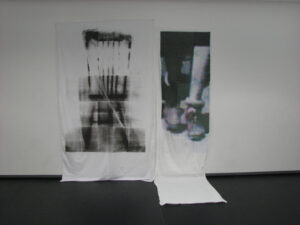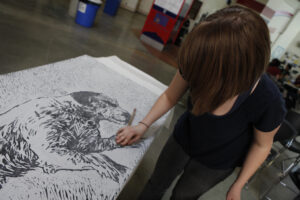
TRU Researchers Investigate the Impacts of a More Artistic Approach to Science Education
The idea of incorporating artistic observation into scientific inquiry is not a new one for Dr. Lyn Baldwin, Assistant Professor of Biology and Botanist at Thompson Rivers University. She has kept illustrated field journals for 15 years in a tradition that hearkens back to such illustrious names as Charles Darwin and Leonardo DaVinci.
For Baldwin, her journals have become a way to maintain a connection with the subject of her research. “My journals are the place where I can cast off the tyranny of hard numbers and testable hypotheses and revel in the intricate wonder of the natural world. They are also the process by which I find my own place in the world… my own complacency is transcended each time I pick up my pen or dab with water colors.”
As an artist Baldwin is no slouch, and her beautifully watercolored observations can be enjoyed on the web (http://www.tru.ca/faculty/lbaldwin/Field Journal/Journals_Home.htm) and have also been appreciated in public exhibition.

In addition to her own research and artistic interests, Baldwin is deeply committed to her teaching responsibilities, and has been curious about the impacts of incorporating an artistic component into traditional scientific study.
“Good observations are often fundamental to good science, and drawing has long been recognized as a tool to develop students’ observation skills” explains Baldwin. But she was concerned about the levels of anxiety that assigning drawing tasks to her students created, and it was this concern that lead to an interdisciplinary collaboration and, ultimately, a publication in the Journal of College Science Teaching.
In an attempt to alleviate some of the anxiety experienced by her students, Dr. Baldwin collaborated with Ila Crawford, a fine arts instructor also employed by TRU. Their collaboration formed the basis of a preliminary discussion of the impacts of providing drawing instruction to science students to increase their confidence in the execution of assignments that require drawing, and to observe the benefits, as perceived these students, of incorporating drawing into science courses.
While the published results are preliminary, Baldwin and Crawford are quite confident that artistic instruction connected with a field-journaling component within undergraduate science courses can assist students in learning how to more completely observe specimens.
“By far, the greatest number of students reported that the illustrated learning journal provided them with greater awareness of the detail and/or variation in the morphology of individual plant specimens. Undergraduate students often have difficulty in understanding variation in organisms, yet this concept forms the bedrock of any discussion of evolution through natural selection.”
Baldwin and Crawford plan to continue their collaboration in order to observe the relationships between the types of journal entries and student achievement.
http://rigs.blog.mytru.ca/2011/01/07/tru-researchers-question-the-role-of-artistic-observation-in-a-scientific-education/














 This piece is a response to an assignment in Art Foundations. The students were asked to select 20 magazine pages without thinking too much about what they were selecting. They were then asked to edit them down to twelve using a more discerning and analytical approach. Finally, they were asked to make an intervention in the images to re-direct or undermine the original message. The student who did this piece used the hotdog, shown in the baggy to the right in the photo, as an iconic paintbrush and painted the US flag across the twelve images. The hotdog has smears of the colours still on it. He used the hotdog as an emblem of extreme consumerism and consumption, typical of western, and specifically US society. The presence of the hotdog makes the piece.
This piece is a response to an assignment in Art Foundations. The students were asked to select 20 magazine pages without thinking too much about what they were selecting. They were then asked to edit them down to twelve using a more discerning and analytical approach. Finally, they were asked to make an intervention in the images to re-direct or undermine the original message. The student who did this piece used the hotdog, shown in the baggy to the right in the photo, as an iconic paintbrush and painted the US flag across the twelve images. The hotdog has smears of the colours still on it. He used the hotdog as an emblem of extreme consumerism and consumption, typical of western, and specifically US society. The presence of the hotdog makes the piece.  Bo Yeung’s installation for fourth year critique has the best wallpaper I have ever seen. Bo has inserted herself, in the guise of various family members, in an array of photos hanging on the wall. Ashok Mathur (Canada Research Chair in Cultural and Artistic Inquiry at Thompson Rivers University) is her fourth year advisor and is standing to the left in the photo. In the fourth year of the BFA program at Thompson Rivers University students work in a studio setting for 12 credits under the supervision of one of the faculty. They meet as a group once a week, in a seminar course, and discuss theory and practice.
Bo Yeung’s installation for fourth year critique has the best wallpaper I have ever seen. Bo has inserted herself, in the guise of various family members, in an array of photos hanging on the wall. Ashok Mathur (Canada Research Chair in Cultural and Artistic Inquiry at Thompson Rivers University) is her fourth year advisor and is standing to the left in the photo. In the fourth year of the BFA program at Thompson Rivers University students work in a studio setting for 12 credits under the supervision of one of the faculty. They meet as a group once a week, in a seminar course, and discuss theory and practice.